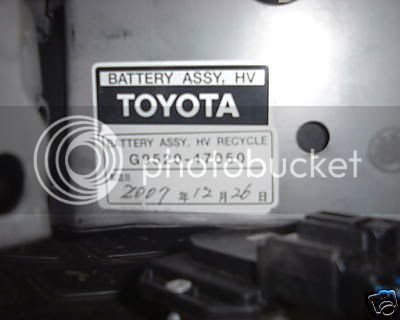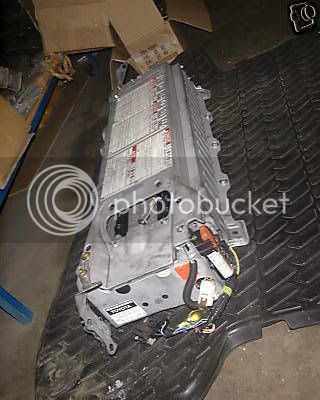Mr. Mik said:
How do you measure the IR?
The crude method is to measure the change in voltage dV from the resting voltage to the voltage under a specific load.
More advanced methods include the use of AC current system in order to try and compensate for some of the non-ohmic effects that cause dV... the AC method is more complex to implement ... but has benefits.
dnmun said:
edit: someone made the comparison about the nimh and lifepo4 and said that the lifepo4 doesn't tolerate overcharging. i think that is inaccurate, they are not damaged any more than nimh by overcharging, imo. similarly for overdisharging, because when you reverse a nimh, or lifepo4, both are useless afterwards. jmho
I've made that comment about tolerating abuse.
LiFePo4 will not tolerate abuse any were near as much as NiMH will ... I've tested both myself ... and read others tests as well... LiFePO4 ... must have a BMS to protect them from the abuses that NiMH are often just expected to take regularly.
Let's take a look at each part just a tiny bit... great detail would be too big... this post is big enough already.
Over Discharge:
I have pulled NiMH cells down into voltage reversal several times ... it does damage ... but it is not an instant death sentence for NiMH ... I have even drained individual cells so far down that after resting for ~12 hours still show less than 0.2V per cell... and they still will recover ... sure they take damage from abuse ... but they are far more tollerant than LiFePO4.
Try to drain a single LiFePO4 cell down to 0.2V resting voltage for ~12 hours ... if it works at all ... it won't take that abuse nearly as well as a NiMH cell will... and my money is that there is a 80+% chance the LiFePO4 battery won't come back at all... Try pulling a LiFePO4 battery into voltage reversal ... if the cell will even let you... and see how well it does afterward .... it won't be nearly as well as a NiMH cell will take that abuse.
Over Charge
The Resting voltage of a fully charged NiMH cell is never more than 1.4V per cell... NiMH cells are often overcharged using CC and taking advantage of their tolerance for this abuse... Try Charging a LiFePO4 battery under a Constant Current until the Voltage levels off ... as in don't switch the LiFePO4 over to the Constant Voltage part they are always finished off at... If you tried to charge a LiFePO4 battery with this kind of regular abuse ... there is no way it would take the hundreds of charge cycles that NiMH cells take under this abuse.
If we wanted to be as gentle to NiMH as we are to LiFePO4 ... we would only do the CC up to 1.4V per cell ... then like the much more delicate LIFePO4 ... we would switch over to a Constant Voltage to top off the rest, until the current level dropped bellow a certain amount ... we would have NiMH BMS that limited current per cell ... and minimum voltage per cell to never go bellow 1.0V... but we usually only see these type of BMS and delicate treatment of batteries ... when they are not the far more tolerant NiMH cells.
I can put a NiMH cell on a Constant current charger of ~C/20... and after is has taken over 3 times the rated Ah of the cell , it will be warm ( maybe even hot ) ... but I can do that to NiMH cell hundreds of times before I lose ~20% of the original rated Ah of capacity ... Try to over charge a LiFePO4 battery like that ... I doubt you will be able to get even 20 such cycles before the LiFePO4 shows serious service life damage from such over charging abuse.
------------
This is not to say LiFEPO4 don't have benefits ... they definitely have many benefits ... but being tolerant of over-charging and over-discharging abuse ... are not among the things LiFePO4 do better than NiMH.... this is why LiFePO4 systems often include BMS monitoring down to the individual cells... while NiMH far more rarely include this level of BMS complexity.
For example ... my 2000 model year Honda Insight on the original ~9 year old NiMH batteries ... is only monitored by the OEM system for voltage once every 12 cells ... for temperature 4 probes for the whole 120 cell battery pack ... for current 1 probe for the whole 120 cell battery pack.... no OEM method for balancing SoC among the 120 cells ... etc... and yet when I pulled the battery pack and tested it ( a few months ago ) ... it still showed ~90% of the original Ah of capacity after ~9 years of abuse taking 15C discharge rates ... 7C charging rates ... in bakes in the summer , freezes in the winter ... etc... NiMH Rav 4 EVs have been on the road even longer under standard NiMH abusive conditions / treatment.
---------------
Of course you don't have to believe me ... you could go out and run a few tests yourself ... if you don't' mind destroying some new batteries.... as used batteries are not a control test , they bring the history along with them... and thus would make for a bad test.
Buy a new NiMH battery ... put a small load on it ( nothing higher than C/2 as we want to really drain the battery down as much as we can ) to pull it down to a 0V condition ... let it sit like that for 12 or more hours ... then force a C/20 Constant current ( CC ) charge rate into it until you have applied 3 times the rated Ah of capacity ... then do a discharge test and measure to see how many Ah the battery will still give you.
Then put a LiFePO4 cell ( like from A123 power tools or others ) under the same abuse ... and repeat the same experiment ... ( you might have to bypass a power tools built in pack safety circuits to even be able to pull it down to 0V ) ... then after it has sat for 12 hours after being discharged to 0V ... over charge it with a C/20 CC rate ignoring the batteries terminal voltage and just keep on forcing in that C/20 CC charging rate until you have applied 3 times the original rated Ah of capacity ... then measure the amount of Ah you get from the LiFePO4 battery pack... If you did bypass the safety IC in order to put the LIFEPO4 battery under this kind of abuse ... I give the LiFePO4 battery less than a 10% chance of taking even 3 such cycles as well as the NiMH battery will.
















